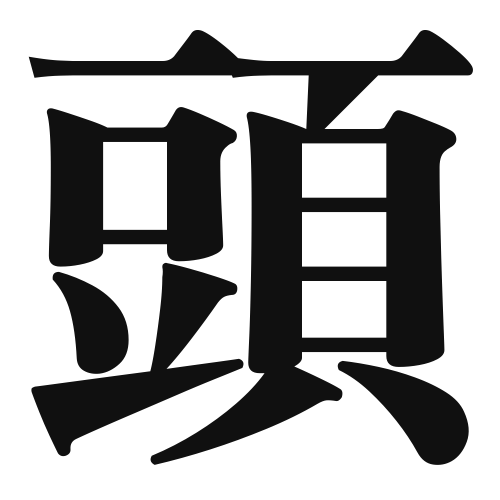1. Overview of Meaning
The kanji “頭” (pronounced “atama” in Japanese) means “head.” It refers to the upper part of the body where the brain, eyes, ears, nose, and mouth are located. Additionally, it can symbolize leadership or the top position in various contexts.
2. Formation and Radical
Formation of the Kanji: The kanji “頭” is a compound character that combines the elements of “髟” (hair) and “豆” (bean). It is classified as a phonetic-ideographic character, where the left part suggests a connection to hair, and the right part provides the phonetic sound.
Radical: The radical for “頭” is “髟,” which relates to hair, indicating its connection to the head and hair on the head.
3. Examples of Usage
Common Words and Phrases: Some frequently used words that include “頭” are:
- 頭痛 (ずつう, “zutsuu”) – headache
- 頭脳 (ずのう, “zunou”) – brain, intellect
- 頭文字 (かしらもじ, “kashiramoji”) – initial letter
Example Sentences in Daily Conversation:
- 今日は頭が痛いです。 (きょうはあたまがいたいです。) – I have a headache today.
- 彼は頭が良いです。 (かれはあたまがよいです。) – He is smart.
4. Synonyms and Antonyms
Similar Kanji: A similar kanji is “脳” (のう, “nou”), which means “brain.” While “頭” refers to the head as a whole, “脳” specifically denotes the brain itself.
Antonyms: An antonym for “頭” could be “足” (あし, “ashi”), meaning “foot,” representing the lower part of the body.
5. Cultural and Historical Background
Connection to Japanese Culture: In Japanese culture, the head is often associated with wisdom and authority. The phrase “頭を使う” (あたまをつかう, “atama o tsukau”) means “to use one’s head,” emphasizing the importance of thinking and intelligence.
Proverbs and Idioms: One common idiom is “頭が固い” (あたまがかたい, “atama ga katai”), which means “to be stubborn” or “to have a rigid mindset,” highlighting the cultural view of the head as a center of thought and decision-making.
